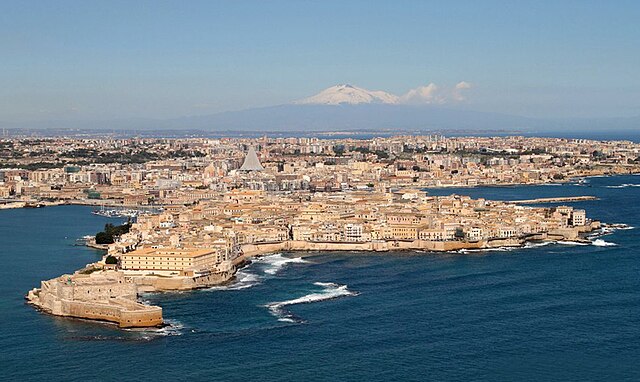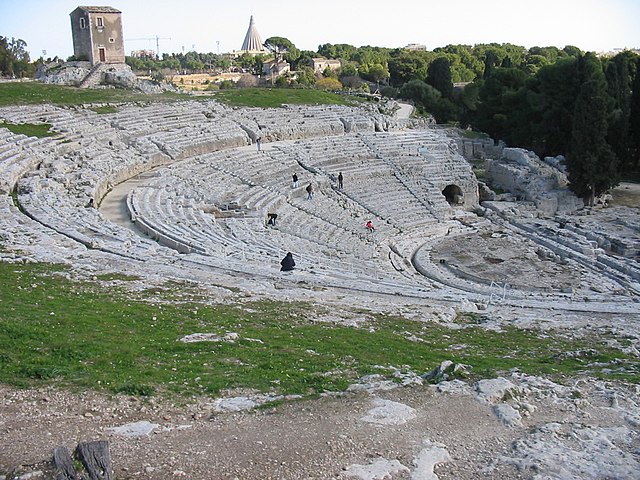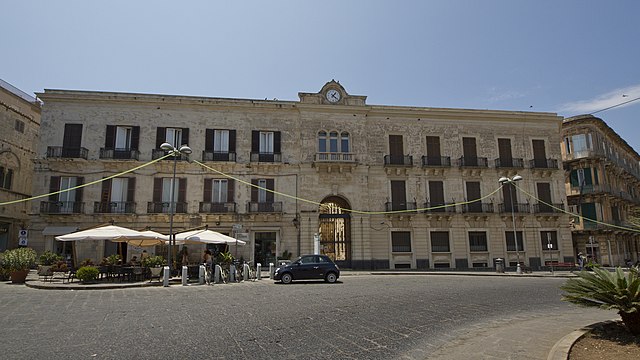Siege of Syracuse (213–212 BC)
The siege of Syracuse by the Roman Republic took place in 213–212 BC. The Romans successfully stormed the Hellenistic city of Syracuse after a protracted siege, giving them control of the entire island of Sicily. During the siege, the city was protected by weapons developed by Archimedes. Archimedes, the prominent inventor and polymath, was slain at the conclusion of the siege by a Roman soldier, in contravention of the Roman proconsul Marcellus's instructions to spare his life.
Archimedes Directing the Defenses of Syracuse by Thomas Ralph Spence (1895).
Hiero II of Syracuse calls Archimedes to fortify the city by Sebastiano Ricci (1720s).
Detail of a wall painting of the Claw of Archimedes sinking a ship (c. 1600)
Archimedes sets Roman ships on fire before Syracuse with the help of parabolic mirrors.
Syracuse is a historic city on the Italian island of Sicily, the capital of the Italian province of Syracuse. The city is notable for its rich Greek and Roman history, culture, amphitheatres, architecture, and as the birthplace and home of the pre-eminent mathematician and engineer Archimedes. This 2,700-year-old city played a key role in ancient times, when it was one of the major powers of the Mediterranean world. Syracuse is located in the southeast corner of the island of Sicily, next to the Gulf of Syracuse beside the Ionian Sea. It is situated in a drastic rise of land with 2,000 metres (6,600 ft) depths being close to the city offshore although the city itself is generally not so hilly in comparison.
The Greek theatre of Syracuse
Image: Veduta aerea di Siracusa e con l'Etna sullo sfondo (Foto di Angelo Bonomo)
Image: Theatre at Syracuse, Sicily
Image: Palazzo dell'orologio, Ortygia, Syracuse, Province of Syracuse, Sicily, Italy panoramio








